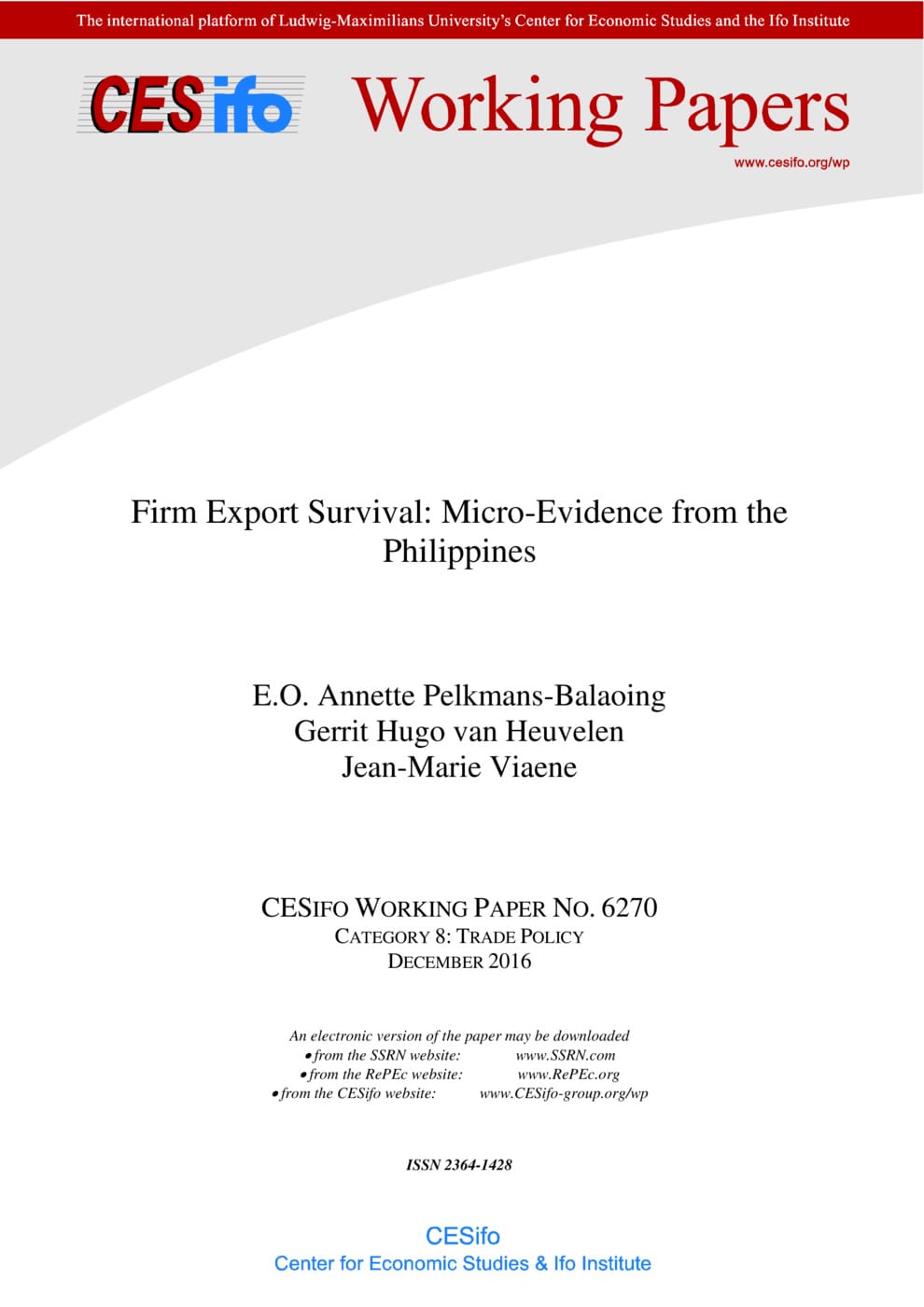Firm Export Survival: Micro-Evidence from the Philippines
CESifo, Munich, 2016
CESifo Working Paper No. 6270

This paper explores firms’ export dynamics in emerging economies where local firms face stiff foreign competition, both at home and abroad, and thus compelled to choose the level of quality in which to export. We develop and test a model of vertical product differentiation where the link between export performance and product quality is central. The impact of other governmental decisions related to multiple uncertainties faced by exporters such as exchange rate, freight and trade policies, are investigated as well. A rich and new firm-level data base is employed, which matches the firm-coded trade transactions data (7-digit) of Philippine manufacturing firms, with their corresponding firm survey data from 1996-2007. Using discrete survival analysis, we show that export spells have a short duration, 20 months on average. Particularly 72.2% of trade relationships in year one do not survive to year two. Market uncertainties, particularly those linked to exchange rates and transport costs increase the probability of firm exit as expected. Export survival rates are highest among firms that select an export price contained in the interval between the median and mean of the international distribution of product prices. In contrast, those choosing a price located at both ends of this distribution have the least chance of survival.
Trade Policy
Empirical and Theoretical Methods